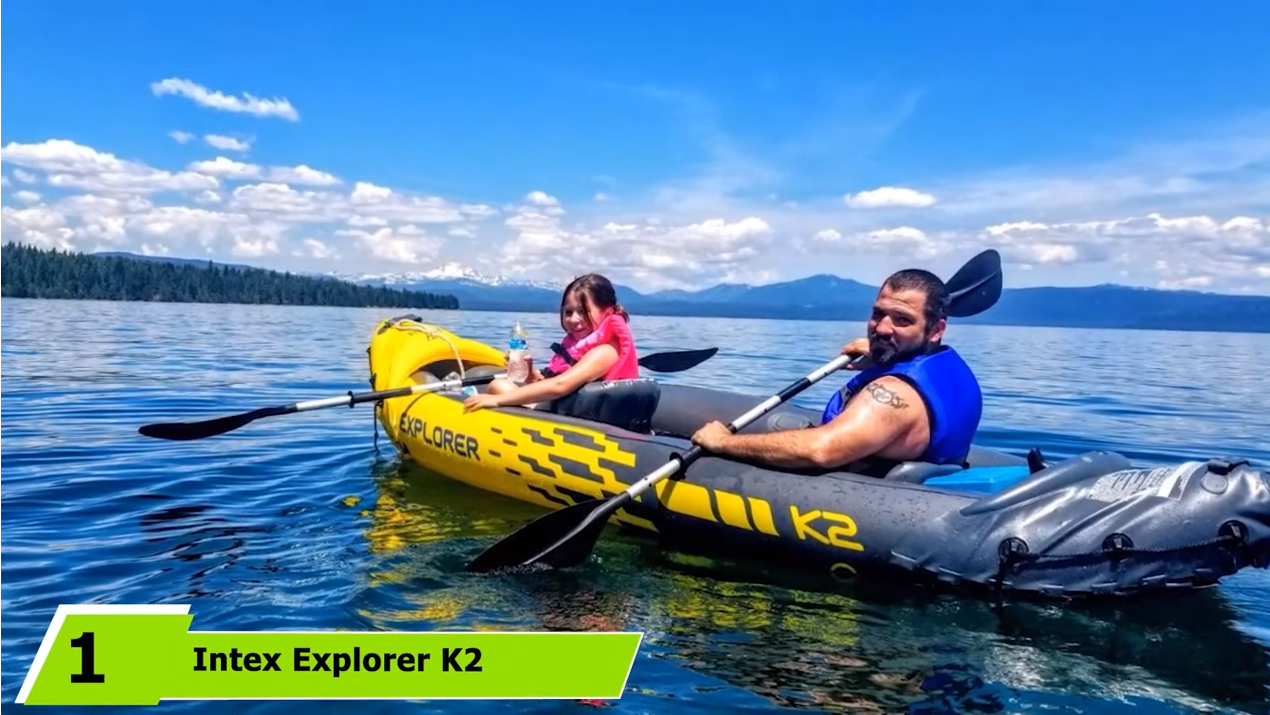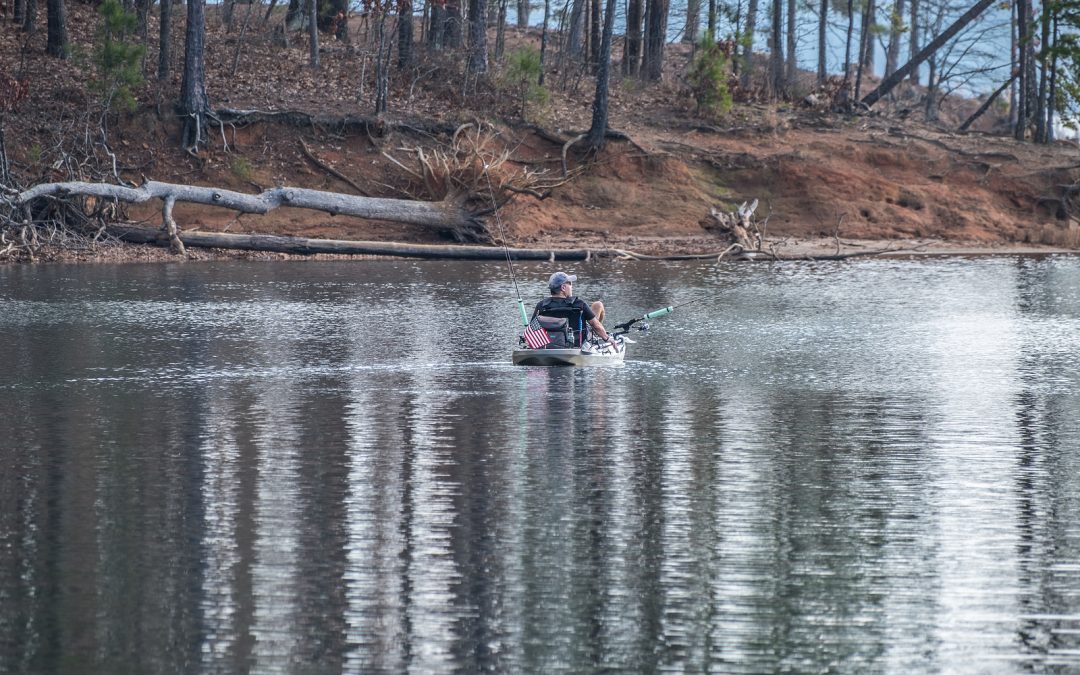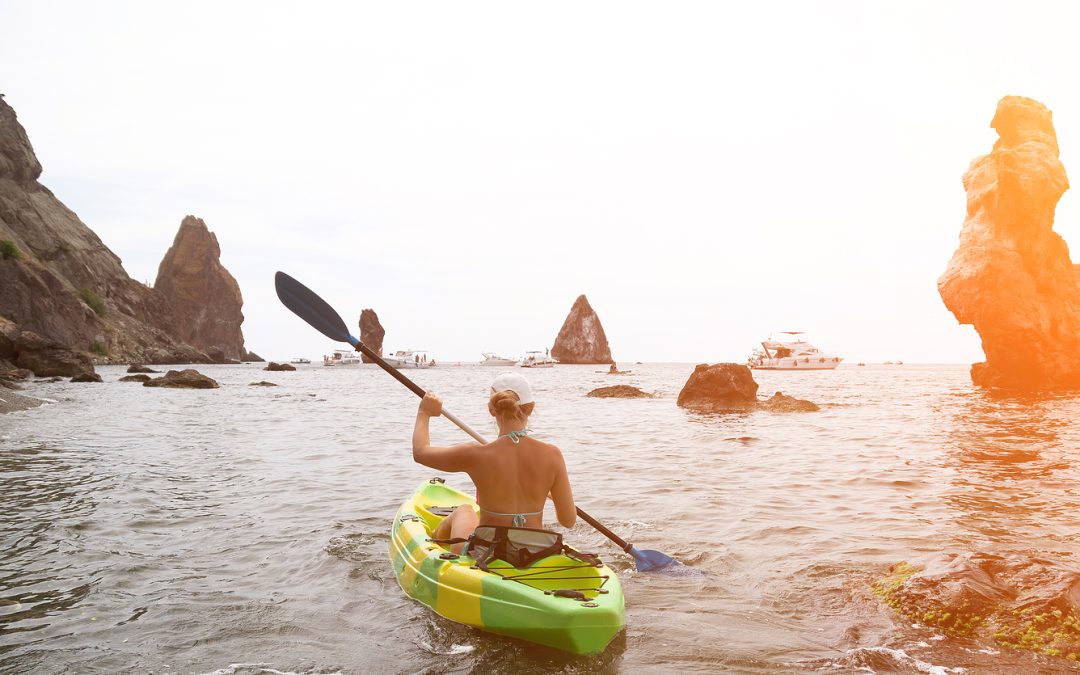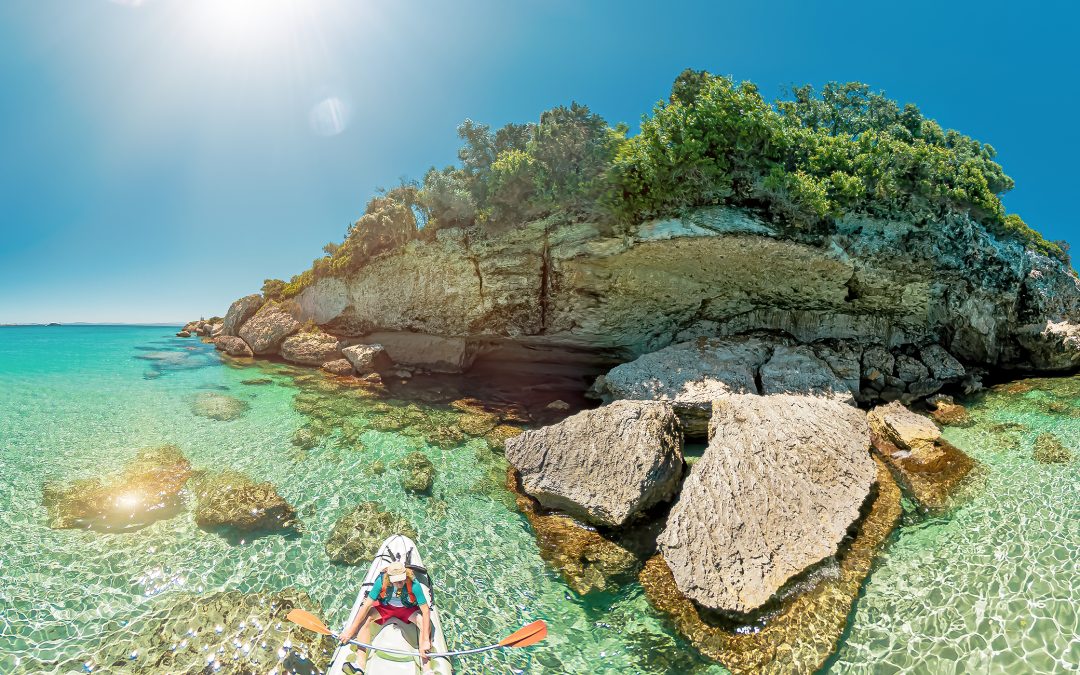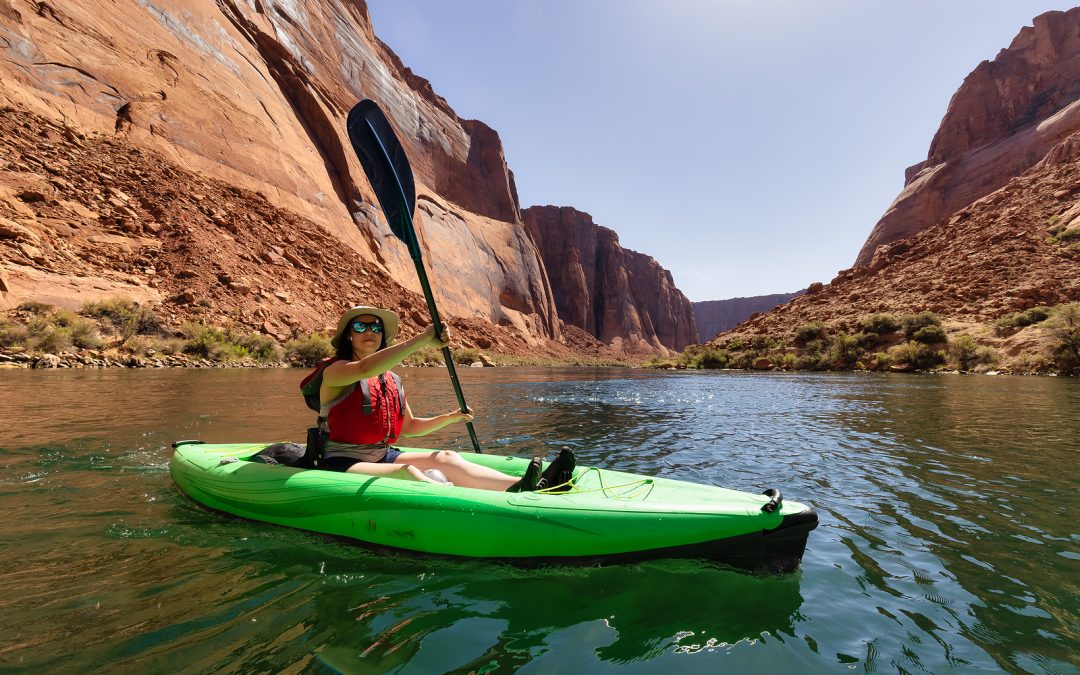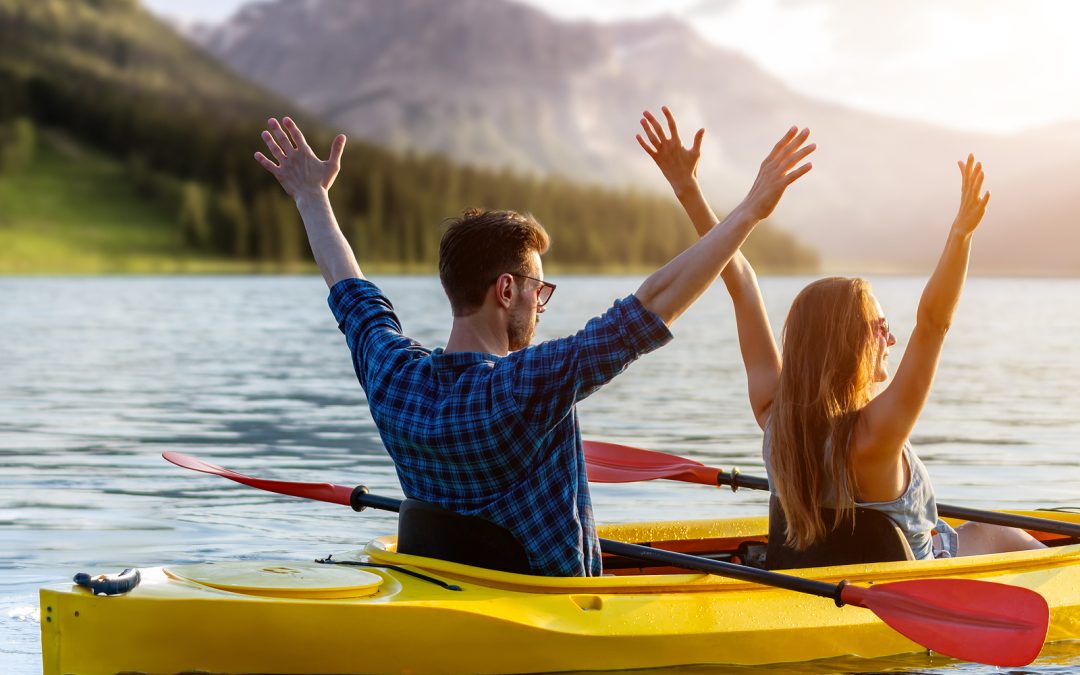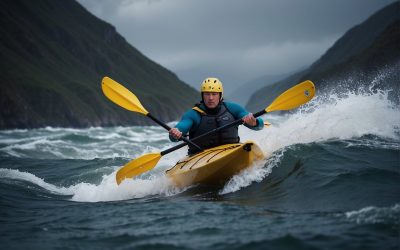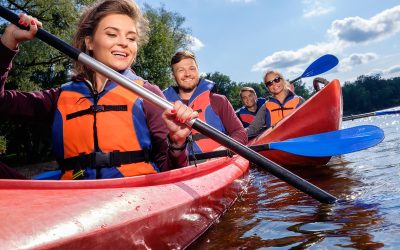Kayaking is a popular water sport that offers adventure and relaxation. Many people wonder about the costs involved before diving in.
The price of kayaking can range from $300 to $2,000 or more, depending on factors like kayak type, quality, and additional gear.

The cost of kayaking includes more than just the kayak itself. Kayak prices vary based on style, material, and brand.
Recreational kayaks are often cheaper, while specialized fishing or touring kayaks tend to cost more. Other expenses to consider are paddles, life jackets, and transportation equipment.
For those new to kayaking, renting can be a good way to start. This allows trying different types of kayaks before making a big purchase.
Some places offer kayak rentals for as little as $20 to $50 per day, which can be a budget-friendly option for occasional paddlers.
Key Takeaways
- Kayak prices range from $300 to $2,000+ based on type and quality
- Additional gear like paddles and life jackets add to the overall cost
- Renting kayaks can be a cost-effective option for beginners or occasional paddlers
Understanding Kayaking Costs

Kayaking costs vary based on the type of kayak and whether you buy new or used. Prices range from affordable to high-end options for different needs and budgets.
Types of Kayaks and Pricing
Recreational kayaks are often the most budget-friendly option, typically costing around $400 for beginners. These kayaks work well for calm waters and casual paddling.
Touring kayaks, designed for longer trips, usually cost more. Prices can range from $1,000 to $3,000 or higher.
Whitewater kayaks, built for rapids, fall in the middle price range. Most cost between $700 and $1,500.
Fishing kayaks come with special features for anglers. Their prices vary widely, from $500 to $2,000 or more.
Inflatable kayaks offer a portable option. Basic models start around $100, while high-quality inflatables can reach $1,000.
New vs. Used Kayaks
New kayaks come with warranties and the latest features. Prices start around $300-$400 for basic models and can go up to $3,000 or more for high-end options.
Used kayaks can save money. Buyers might find discounts of 30-50% off original prices. However, used kayaks may have wear and tear or outdated features.
When buying used, inspect the kayak carefully for damage. Check for cracks, dents, or soft spots in the hull.
Consider the kayak’s age and how often it was used. A lightly used, newer model might offer the best value.
Essential Kayaking Gear
Kayaking requires key safety equipment and tools for a fun and secure experience. Two vital categories of gear are personal flotation devices and paddles with accessories.
Personal Flotation Devices
Personal flotation devices (PFDs) are crucial for kayak safety. A good PFD costs between $40 and $100.
Choose a Coast Guard-approved Type III PFD made for paddling. It should fit snugly but allow free movement.
Look for features like:
- Adjustable straps
- Ventilation panels
- Pockets for small items
PFDs come in bright colors to increase visibility on the water. Some have reflective strips for extra safety. Try on different styles to find one that’s comfortable for long paddling trips.
Paddles and Accessories
A quality paddle is essential for an enjoyable kayaking trip. Paddle prices range from $50 to $300.
Aluminum paddles are cheaper but heavier. Fiberglass or carbon fiber paddles cost more but are lighter and more efficient.
Key paddle features:
- Proper length for your height and kayak width
- Comfortable grip
- Feathered or matched blade options
Useful accessories include:
- Dry bags to keep gear water-free
- Waterproof phone case
- Bilge pump to remove water from the kayak
These items protect your belongings and enhance safety on the water. Budget $50-$100 for basic accessories to start.
Additional Expenses

Kayaking involves more than just buying a boat. You’ll need gear to transport your kayak and keep it in good shape. These extras add to the total cost of the sport.
Transportation Equipment
Getting your kayak to the water requires some equipment. A roof rack for your car costs $100-$300.
Kayak carriers or J-cradles range from $50 to $200. For easier loading, a lift assist device runs $100-$300.
Tie-down straps are essential for safety. A set of quality straps costs $20-$40. If you have a pickup truck, a bed extender for longer kayaks is $100-$200.
For those without a suitable vehicle, a kayak trailer is an option. Small trailers start around $500, while larger ones can exceed $2000.
Maintenance and Storage
Proper care extends a kayak’s life. Cleaning supplies like soap and brushes cost $20-$30 per year. UV protectant spray is $10-$20 annually. Repair kits for small damages run $15-$30.
Storage solutions vary. A wall mount system for home storage is $50-$150. Outdoor covers protect kayaks from the elements and cost $30-$80.
For those without home storage, kayak racks at marinas or storage facilities can cost $10-$50 per month. This adds up to $120-$600 yearly.
Regular maintenance checks by professionals might cost $50-$100 annually, depending on the kayak’s condition and usage.
Kayaking Destinations and Fees

Kayaking destinations often come with associated costs. These can include permit fees for access to certain waterways and the option of guided tours versus self-guided trips.
Permit and Entry Fees
Many popular kayaking spots require permits or charge entry fees. National parks like Everglades in Florida charge around $25 per vehicle for a 7-day pass. State parks may have lower fees, typically $5-$15 per day.
Some areas require special permits for overnight trips or accessing remote locations. These can range from $10 to $50 or more depending on the duration and location.
Certain urban waterways or reservoirs might charge launch fees. These are often minimal, around $5-$10 per kayak.
It’s important to research fees in advance. Many locations offer annual passes for frequent visitors, which can save money in the long run.
Guided Tours vs. Solo Explorations
Guided kayak tours provide equipment, instruction, and local knowledge. Prices vary widely based on location and duration.
Half-day tours typically cost $50-$100 per person. Full-day excursions can range from $100-$200 or more.
Multi-day guided trips, including camping and meals, may cost $200-$500 per day.
Solo explorations are often cheaper but require owning or renting equipment. Kayak rentals usually run $30-$70 per day.
Self-guided trips offer more flexibility and independence. However, they require more planning and experience.
Beginners might benefit from guided tours to learn safety and technique. Experienced kayakers may prefer the challenge of solo trips.
Cost Considerations for Kayaking Trips

Kayaking trips can vary widely in cost depending on several key factors. The length of your journey and where you plan to stay overnight play major roles in determining the overall expense.
Duration and Distance Factors
The length of your kayaking trip greatly impacts the cost. Day trips are generally less expensive, often requiring only basic gear and supplies. Longer trips need more planning and equipment.
Multi-day excursions may require:
- Camping gear
- Extra food and water
- Navigation tools
- Safety equipment
Traveling longer distances might also mean:
- Transportation costs to and from launch sites
- Potential fees for crossing different waterways
- Increased gear wear and tear
Food and Accommodation
Food and lodging can significantly affect a kayaking trip’s budget. Camping is usually the most affordable option for overnight stays.
Campsite fees typically range from $10 to $30 per night. Some areas offer free primitive camping.
For food, paddlers can save money by:
- Packing non-perishable items
- Bringing a small camping stove
- Planning meals in advance
Those seeking more comfort might opt for:
- Bed and breakfasts near water access points
- Guided tours with included meals
- Resorts that offer kayak rentals
These options can increase costs but provide added convenience and amenities.
Seasonal and Regional Price Variations

Kayak prices can change based on the time of year and where you live. Many stores offer sales during certain seasons.
Spring and fall often have good deals on kayaks. Retailers want to clear out old stock before new models arrive.
Winter can be a great time to find discounts. Fewer people buy kayaks then, so prices may drop.
In warmer areas, kayak prices might stay steady year-round. Places with longer kayaking seasons may have less dramatic price swings.
Coastal regions sometimes have higher kayak prices. There’s more demand near water, which can drive up costs.
Inland areas far from lakes or rivers might have lower prices. Less local interest can lead to better deals.
Some brands adjust prices based on shipping costs. Kayaks made far away may cost more in certain regions.
Local kayak makers might offer better prices in their area. They save on transport and can pass savings to customers.
Online prices can differ from in-store prices. Kayak costs online may be lower, but shipping fees can add up.
Keep an eye out for end-of-season sales and regional promotions. These can help you find the best kayak prices in your area.
Money-Saving Tips for Kayakers

Smart kayakers can cut costs without sacrificing fun on the water. By taking advantage of group deals and shopping at the right times, paddlers can get more for their money.
Group Discounts and Memberships
Joining kayaking clubs or groups often leads to savings. Many outdoor stores offer discounts to club members. These can apply to gear, kayaks, and even guided trips. Some clubs also share equipment, cutting individual costs.
Kayakers can look for group deals on lessons and tours. Tour companies may lower prices for larger groups. This makes it cheaper to learn or explore new areas.
Paddlers can also team up to buy in bulk. Splitting the cost of items like safety gear or car racks can save money. Group buys of kayaks might even lead to better prices from dealers.
Off-Season Shopping
Timing purchases can lead to big savings. Many stores slash prices on kayaks and gear in fall and winter.
This is when demand drops and new models are coming in.
Kayakers should watch for end-of-season sales. These often happen in August or September.
Discounts can reach 20-30% off regular prices.
Used kayaks can be a great deal in the off-season. People often sell their boats as summer ends.
This can mean lower prices and more choices for buyers.
Gear like paddles and life jackets may also be cheaper off-season. Kayakers can stock up on these items when prices drop.
This prepares them for the next paddling season at a lower cost.
Frequently Asked Questions

Kayak costs vary depending on rental duration, location, and type. Prices for purchasing kayaks differ based on style, materials, and features.
What is the average cost of renting a kayak for one day?
Daily kayak rentals typically range from $30 to $70. Prices depend on the kayak type and rental location.
Some places offer half-day rates at a lower cost.
What are typical kayak rental prices in my vicinity?
Local kayak rental prices vary by region and demand. Urban areas often charge more than rural locations.
Prices can start around $20 for a few hours and go up to $100 for a full day, depending on the kayak quality and included gear.
How much does it cost to purchase a tandem kayak?
Tandem kayaks generally cost more than single kayaks. Prices start around $500 for basic models.
High-end tandem kayaks can reach $2,000 or more, depending on materials and features.
What are the price ranges for buying a kayak at retail stores?
Retail kayak prices vary widely. Basic recreational kayaks start around $300-$400.
Mid-range options cost $600-$1,000. High-end kayaks for specific uses like touring or fishing can exceed $1,500.
How much does a standard canoe purchase price compare to that of a kayak?
Canoes generally cost more than comparable kayaks. Entry-level canoes start around $500-$800.
Mid-range canoes cost $1,000-$2,000. High-end canoes can exceed $3,000.
What factors affect the cost of kayak rentals?
Rental duration significantly impacts cost.
Weekends and holidays often have higher rates.
Kayak type and quality also affect price.
Additional gear like paddles and life jackets may increase the total cost if not included.


